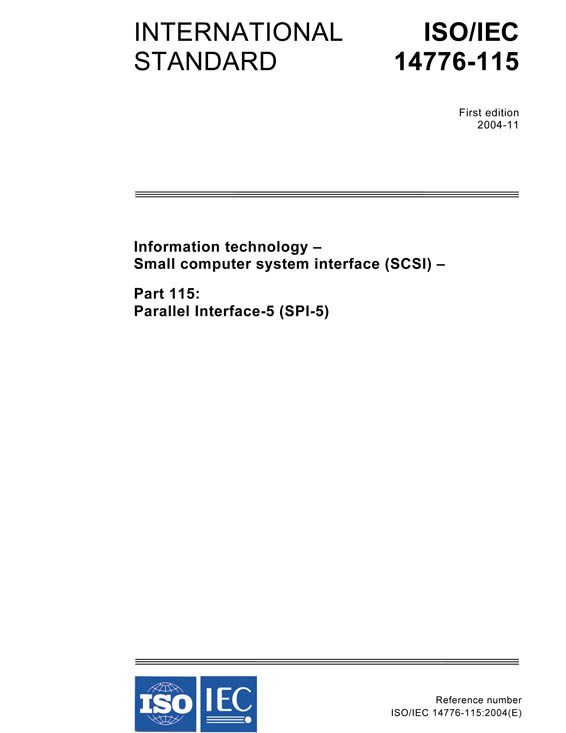ISO/IEC 14776-115:2004
Information technology - Small computer system interface (SCSI) - Part 115: Parallel Interface-5 (SPI-5)
Ausgabedatum:
2004-11
Edition:
1.0
Sprache: EN - englisch
Seitenzahl: 321 VDE-Artnr.: 211659
The SCSI protocol is designed to provide an efficient peer-to-peer I/O bus with the maximum number of hosts and peripherals determined by the bus width (8 or 16). Data may be transferred asynchronously or synchronously at rates that depend primarily on device implementation and cable length. This part of ISO/IEC 14776 defines mechanical, electrical, timing requirements, command sets, and the task management delivery protocol requirements to transfer commands and data between SCSI devices attached to an SCSI parallel interface. The resulting interface facilitates the interconnection of computers and intelligent peripherals and thus provides a common interface standard for both system integrators and suppliers of intelligent peripherals. This standard defines the physical attributes of an input/output bus for interconnecting computers and peripheral devices. The SCSI parallel interface is a local I/O bus that may be operated over a wide range of transfer rates. The objectives of the SCSI parallel interface are: a) To provide host computers with device independence within a class of devices. Thus, different disk drives, tape drives, printers, optical media drives, and other SCSI devices may be added to the host computers without requiring modifications to generic system hardware. Provision is made for the addition of special features and functions through the use of vendor-specific options. Reserved areas are provided for future standardization. b) To provide compatibility such that conforming SPI-2, SPI-3 devices may interoperate with SPI-5 devices given that the systems engineering is correctly done. Conforming SPI-2, SPI-3, and SPI-5 devices should respond in an acceptable manner to reject SPI-5 protocol extensions. SPI-5 protocol extensions are designed to be permissive of such rejections and thus allow SPI-2 and SPI-3 devices to continue operation without requiring the use of the extensions.


